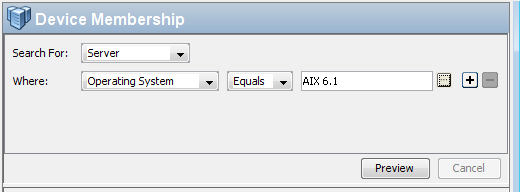Searching the Help
To search for information in the Help, type a word or phrase in the Search box. When you enter a group of words, OR is inferred. You can use Boolean operators to refine your search.
Results returned are case insensitive. However, results ranking takes case into account and assigns higher scores to case matches. Therefore, a search for "cats" followed by a search for "Cats" would return the same number of Help topics, but the order in which the topics are listed would be different.
| Search for | Example | Results |
|---|---|---|
| A single word | cat
|
Topics that contain the word "cat". You will also find its grammatical variations, such as "cats". |
|
A phrase. You can specify that the search results contain a specific phrase. |
"cat food" (quotation marks) |
Topics that contain the literal phrase "cat food" and all its grammatical variations. Without the quotation marks, the query is equivalent to specifying an OR operator, which finds topics with one of the individual words instead of the phrase. |
| Search for | Operator | Example |
|---|---|---|
|
Two or more words in the same topic |
|
|
| Either word in a topic |
|
|
| Topics that do not contain a specific word or phrase |
|
|
| Topics that contain one string and do not contain another | ^ (caret) |
cat ^ mouse
|
| A combination of search types | ( ) parentheses |
|
About rules for a dynamic device group
Servers and other devices are automatically added to and removed from dynamic device groups by SA based on the rules you create for the group. You can change the membership of a dynamic group by adding, deleting, or modifying these rules. See also Adding rules for a dynamic device group and Modifying rules for a dynamic device group.
A rule is a condition that specifies values for some attribute of servers such as IP address, server name, operating system, and many others. Servers either comply with each rule or not. For example, the following are example rules and example servers that demonstrate how servers would be included in the group or excluded from the group.
- All servers with a name that begins with the string “pro”. A server named “provision1.hp.com” would be included by this rule. A server named “approval4.hpe.com” would not.
- All servers that are in the subnet 192.168. A server at IP address 192.168.123.7 would be included by this rule. A server at IP address 192.167.43.18 would not.
- All servers with operating system HP-UX version 11.31. All servers with this operating system would be included by this rule. Servers with any other operating system or any other version of HP-UX would not.
- All servers attached to a particular software policy named “AccountingDB”.
- All servers that have a particular patch installed.
You can define a wide variety of rules and create as many device groups as you need to make managing your IT environment faster, easier and more efficient.
Format of rules for dynamic device groups
Rules for dynamic device groups take the following form:
Search for: <Device>
Where: <Attribute> <Operator> <Value>
<Device>is typically Server because device groups contain servers, but it can also be other kinds of devices.<Attribute>is some piece of data about the device you want the rule to examine.<Operator>is a comparison you want to perform between the<Attribute>and the<Value>.<Value>is the specific data you want to compare to the<Attribute>using the<Operator>.
Example Rule 1 - Servers running a particular OS
Select all servers running AIX 6.1 device group rule displays a dynamic device group rule that selects all servers running the AIX 6.1 operating system and places them into the device group:
Select all servers running AIX 6.1 device group rule

Example Rule 2 - Servers attached to a software policy
Servers attached to a software policy device group rule displays a dynamic device group rule that selects all servers attached to the software policy “HP-UX ISMTool”:
Servers attached to a software policy device group rule

Example Rule 3 - Servers with a particular name
Servers with a particular name device group rule displays a dynamic device group rule that selects all servers with a name beginning with the characters “pro”:
Servers with a particular name device group rule

Example Rule 4 - Servers in a subnet
You can create device groups containing servers on a particular subnet. You can use an IP address and either a subnet mask or a CIDR number to specify the network address of the subnet. When you select IP Address as the server attribute to search on and Within Subnet as the operator, you must enter an IP address and either a subnet mask or a CIDR number as follows:
- <IP address>/<Subnet mask>
- <IP address>/<CIDR number>
For example, both of the following examples specify a subnet of 192.168:
- Subnet mask:
192.168.0.0/255.255.0.0
- CIDR block:
192.168.0.0/16
We welcome your comments!
To open the configured email client on this computer, open an email window.
Otherwise, copy the information below to a web mail client, and send this email to hpe_sa_docs@hpe.com.
Help Topic ID:
Product:
Topic Title:
Feedback:





